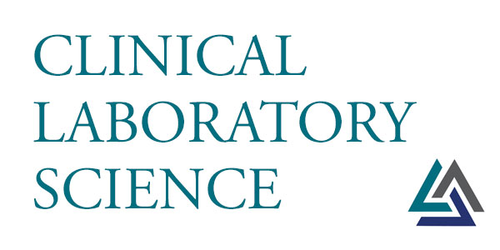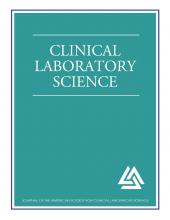This article requires a subscription to view the full text. If you have a subscription you may use the login form below to view the article. Access to this article can also be purchased.
- Rita M. Heuertz, PhD, MT(ASCP)⇑
- Address for Correspondence: Rita M. Heuertz, PhD, MT(ASCP), Professor, Department of Biomedical Laboratory Science, Doisy College of Health Sciences, Saint Louis University, 3437 Caroline Street, St. Louis, MO 63104-1111, 314-977-8610, heuertzr{at}slu.edu
Abstract
The NIH identified that most microbial infections are biofilm-associated. Bacterial biofilm formation in human infection is of great concern to public health, as it has been associated with increased antimicrobial resistance, decreased effectiveness of host response, chronicity of infection, and medical device-associated disease. The pathogen, methicillin-resistant Staphylococcus aureus (MRSA), warrants special attention since it has been a frequent culprit in hospital- and community-acquired infections, is known to form biofilms in vivo, and is notoriously resistant to antimicrobics. This study sought to inhibit biofilm formation and/or reduce MRSA viability using the phytochemical cinnamaldehyde, which has been widely studied as an antimicrobial agent as well as a quorum sensing inhibitor. Clinical MRSA isolates from area hospital laboratories were assessed for cinnamaldehyde effect using a: (i) microplate assay for quantitative spectrophotometric evaluation of crystal violet-stained biofilm adherent to microwells; and (ii) viable bacterial count assay for colony forming unit (CFU/ml) enumeration. Results indicated that cinnamaldehyde inhibited MRSA biofilm formation in a concentration-dependent manner with significance (p<0.01) at 50 and 100 μM. Colony counts of MRSA were also significantly (p<0.01) reduced in a concentration-dependent manner. Taken together, these results indicate that cinnamaldehyde inhibits MRSA biofilm formation at early time points and reduces cell viability. Since an early effect of cinnamaldehyde was noted in this study, in the future, expanded kinetic studies will be assessed to ascertain cinnamaldehyde effects at the different steps of biofilm formation.
ABBREVIATIONS: MRSA – methicillin-resistant S. aureus, MSSA – methicillin-susceptible S. aureus, TSB – tryptic soy broth
- INDEX TERMS
- Anti-Infective Agents
- Biofilms
- Phytochemicals
- Methicillin-Resistant Staphylococcus aureus
- Quorum Sensing
- Public Health
- Cinnamicaldehyde
- © Copyright 2018 American Society for Clinical Laboratory Science Inc. All rights reserved.







